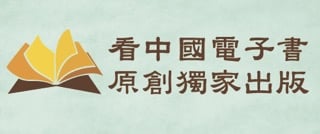四大發明中,西方認可三樣,活字印刷術他們認為是德國人發明的。
國人現在比較缺乏客觀。如果黑火藥(中國人後來多將其用在鞭炮)不算火藥,那紙莎草紙能夠當紙麼?
歷史是一種過去的事實,故意抬高不可取,但刻意貶低也不應該。先東子等各位朋友,認清事實破除阿Q精神,不是靠盲目的自我貶低可以達到的。
中國的手工業在很長的時期內都領先於世界,這是事實。只是中國的技術多是一種感性的認識(即依靠生活的積累)而缺乏西方科學那樣的微觀的分析(例如化學和物理學)。
其他我暫時不講,誰有興趣可以提出來討論,我就先講造紙術。
老是有人講什麼埃及人發明瞭紙,這是歪曲。紙莎草紙並不是真正的紙。這是用生長於尼羅河兩岸的紙莎草的外殼纖維編織而成(類似於竹簡,不過輕便許多),西方史學界從來都不把紙莎草紙當作真正的紙,所以在中國紙製作方法傳入歐洲之前,許多書本都是抄在羊皮紙(叫紙但也不是紙)上。
請看看西方人如何說造紙術的。
History Of Paper
Mankind has always sought to improve ways of communicating and recording thoughts. Early attempts at achieving this involved the use of waxed boards, leaves, bronze, silk, and clay tablets. It wasn』t until the invention of paper that information could be recorded and passed on cheaply and in greater quantity.
4,000 B.C. - Ancient Egyptians invented the first substance like paper as we know it. Papyrus was a woven mat of reeds, pounded together into a hard, thin sheet. (這就是紙莎草紙不是真正的紙的原因)The word "paper" actually comes from the word "papyrus". Later on in history, the Ancient Greeks used a kind of parchment made from animal skins for the same purpose.
A.D. 105 - Paper as we know it was invented by Ts』ai Lun, a Chinese court official. It is believed that Ts』ai mixed mulberry bark, hemp, and rags with water, mashed it into a pulp, pressed out the liquid and hung the thin mat to dry in the sun. Paper was born and this humble mixture would set off one of mankind』s greatest communication revolutions. Literature and the arts flourished in China.(西方人都承認造紙術的出現促進了中國文化的發展)
A.D. 610 - Bhuddist monks gradually spread the art to Japan. Papermaking became an essential part of Japanese culture and was used for writing material, fans, garments, dolls, and as an important component of houses. The Japanese were also the first to use the technique of block printing.
A.D. 751 - Samarkland. Chinese and Arab armies clash after decades of peaceful trading. The chinese are defeated and many are taken prisoner. Among the prisoners are paper makers who attempt bargain for their freedom by teaching the Arabs the secrets of paper making.
A.D. 1009 - It took about 400 years for paper to traverse the Arab world to Europe. The first paper mill in Europe was built by the Arabs in Xativa, Spain. Paper making continued here under Moorish rule until 1244 when European armies drove them out. Paper making then began to gradually spread across Christian Europe.
A.D. 1250 - Italy becomes a major paper producer. The Italians vigorously produced the material and exported large amounts of it, dominating the European market for many years.
A.D. 1338 - 1470 - French monks begin producing paper for holy texts. France quickly adopts this new technology and becomes a self-sufficient and competitive paper producer.
A.D. 1411 - The first paper mill in Germany is converted from a flour mill with assistance from the Italians. Germany greatly improved the craft and made the finest papers available. In 1453 Johann Gutenberg invented the movable type printing press. The printing press was the next stage in the communication revolution. Previously, books were owned only by monasteries, royalty, and scholars, very few people could even read. For the first time, the impoverished masses had access to books, and more importantly knowledge. With the availability of books, literacy increased. As literacy increased, the demand for books - and paper increased as well. (這裡很清楚地說明,造紙術是文化交流的革命。在此以前,只有僧侶、皇室人員及學者等少數人才能擁有書籍。紙的出現使窮苦大眾也能擁有書本和知識,這就促進了文化的發展。)
A.D. 1588 - England begins to make its own paper.
A.D. 1680 - The first paper mill in the new world is established by the Spanish in Culhuacan, near the capital of Mexico.
A.D. 1690 - A German immigrant to North America named William Rittenhouse founded the first paper mill in North America near Philadelphia. This is also where the first American paper makers were trained.
A.D. 1719 - Rene Antoine Ferchault de Reaumur suggests that paper could be made from wood in response to a critical shortage of paper making materials. At the time all paper was made from old clothes and rags. There were not enough rags to supply the ever increasing demand for paper. Reaumur was inspired by observing wasps building their nest.
A.D. 1798 - Nicholas Robert invented the paper making machine. His hand-cranked device made paper on a continuous revolving screen. However he was unsuccessful at finding investors. Hearing of Robert』s invention from a mutual acquaintance, the Fourdrinier brothers of England create their own paper making machine. Although they did not use their invention, paper making machines bear their name to this day.
A.D. 1850 - Friedrich Gottlob Keller of Germany devises a method of making paper from wood pulp. However the paper is of poor quality.
A.D. 1852 - Hugh Burgess, an Englishman, perfects the use of wood pulp by 『digesting』 the wood with chemicals.
A.D. 1867 - C.B. Tilghman, an American chemist, improved the process of making paper from wood by using sulfites during the pulping process.
A.D. 1879 - C.F. Dahl, a Swede finally perfected the use of wood by adding yet another chemical. His 『sulfate』 method spread rapidly and reached the United States in about 1907.
A.D. 1883 - Charles Stillwell invented a machine to make brown paper bags for groceries in Philadelphia. Today more than 20 million paper bags are used annually in supermarkets. Many of these are recycled into new bags and boxes.
A.D. 1889 - 1900 - Economical, mass produced paper became a reality. Paper production doubled to about 2.5 million tons per year. Newspapers, books, and magazines flourished. Paper found its way into schools, replacing the writing slate.
當然我們可以看到,後來西方的造紙技術又超過了中國。但這並不是說紙不是中國人對世界的貢獻。
讀者推薦(文章僅代表作者個人立場和觀點)
- 關鍵字搜索:
- 詆毀
看完那這篇文章覺得













排序